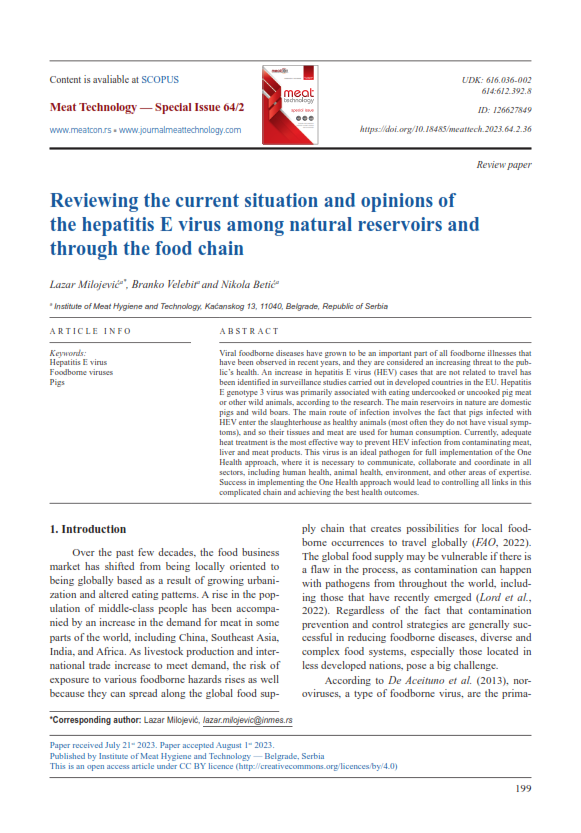Reviewing the current situation and opinions of the hepatitis E virus among natural reservoirs and through the food chain
Abstract
Viral foodborne diseases have grown to be an important part of all foodborne illnesses that have been observed in recent years, and they are considered an increasing threat to the public’s health. An increase in hepatitis E virus (HEV) cases that are not related to travel has been identified in surveillance studies carried out in developed countries in the EU. Hepatitis E genotype 3 virus was primarily associated with eating undercooked or uncooked pig meat or other wild animals, according to the research. The main reservoirs in nature are domestic pigs and wild boars. The main route of infection involves the fact that pigs infected with HEV enter the slaughterhouse as healthy animals (most often they do not have visual symptoms), and so their tissues and meat are used for human consumption. Currently, adequate heat treatment is the most effective way to prevent HEV infection from contaminating meat, liver and meat products. This virus is an ideal pathogen for full implementation of the One Health approach, where it is necessary to communicate, collaborate and coordinate in all sectors, including human health, animal health, environment, and other areas of expertise. Success in implementing the One Health approach would lead to controlling all links in this complicated chain and achieving the best health outcomes.





